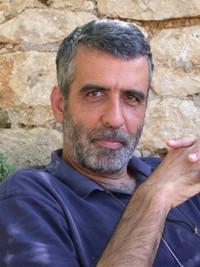Em Journal of Hebrew Scriptures (JHS), da Universidade de Alberta, Canadá, no vol. 9, artigo 24, de 2009, leio um artigo de Israel Finkelstein, Persian Period Jerusalem and Yehud: A Rejoinder [Jerusalém e Yehud na Época Persa: uma réplica]
Diz o Abstract:
This is a rejoinder to several recently published articles which take issue with my views on Persian period Jerusalem and Yehud. The article deals with methodological issues such as inconsistencies between archaeology and text and the meaning of negative evidence in archaeology. On the factual level, with the available data at hand, I see no reason to change my views : Persian period Jerusalem covered ca. 2-2.5 hectares, and both the description of the construction of the city-wall in Nehemiah 3 and the List of Returnees in Ezra and Nehemiah probably reflect late Hellenistic (Hasmonean) period realities.
Finkelstein diz na Introdução de seu artigo:
“I have recently published articles on Jerusalem and Nehemiah’s wall (Finkelstein 2008a), and about the light that archaeology sheds on the List of Returnees in Ezra and Nehemiah (idem 2008b). My main conclusions in these two articles are:
1. Persian period Jerusalem was a small settlement that covered an area of ca. 2–2.5 hectares, with a population of no more than a few hundred people.
2. Over a century of archaeological investigation in Jerusalem has failed to reveal any trace of a city-wall that can be dated to the Persian period and identified as the wall of Nehemiah.
3. The description of the construction of the wall in Nehemiah 3 may represent the reality of the erection of the First Wall in the Hasmonean period.
4. The archaeology of the places mentioned in the List of Returnees in Ezra (2:1–67) and Nehemiah (7:6–68) seems to show that this text, too, probably represents a Late Hellenistic (2nd century BCE) rather than a Persian-period
reality.
A few recent publications have taken issue with these observations (Zevit 2009; E. Mazar 2009; Barkay 2008; Lipschits 2009). This article is meant to address the main arguments advanced in these publications. My major interest is not the dispute itself, but rather the methodological questions that stand behind the debate, namely issues related to the methods of field archaeology and the interface between archaeology and the biblical texts”.
Diz Finkelstein que seu interesse não é polemizar com aqueles que discordam dele, mas abordar as questões metodológicas envolvidas no debate, especialmente questões relativas aos métodos da arqueologia de campo e a interface entre arqueologia e textos bíblicos.
Todos os interessados em História de Israel e arqueologia da Palestina estão convidados a dar uma espiada…
